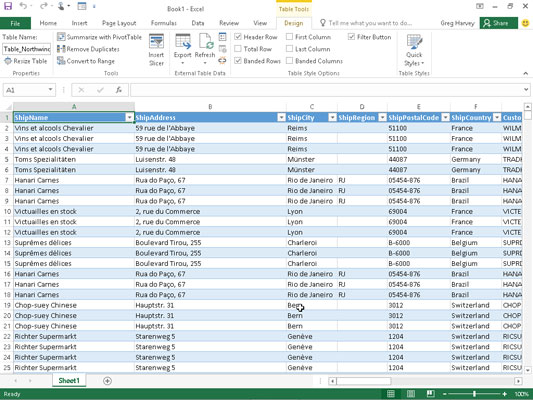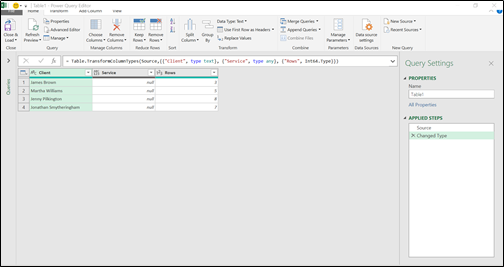

- What is an excel query table how to#
- What is an excel query table manual#
- What is an excel query table code#
In Power BI, the functionality exists on the Home tab, in the External Data section. In Excel 2016, they can be accessed through the Data tab, and then the Get & Transform Data section. However, in Excel 2016 and Power BI, these tools are more tightly integrated. In previous versions of Excel, Power Query was an add-in that could be installed to help with ETL functions.
What is an excel query table how to#
How to Access Get & Transform in Excel or Power BI Then I will use Get & Transform solely for the initial data exploration, and then move the heavy lifting into R.


By using an Excel-based platform, I can quickly iterate with my data source to find these data anomalies. In many cases, at this stage, I will find that I need more data, or that there are data issues. This allows me to see what transformations might be necessary and quickly perform some pivots and groupings on the data to formulate a framework for analysis. Generally, when I receive new data, I will explore it using Get & Transform before loading it into Power Pivot.

Why is it worthwhile learning how to use Get & Transform? Well, when I look at what I have personally used this functionality for, it has offered me a malleable set of tools for: In the diagram below, we see that Get & Transform performs this tedious role of pre-processing the data before it is loaded. Some examples of data manipulation would include: Using its embedded extract, transform, and load (ETL) functionality enables financial analysts to seamlessly link to their data sources and get to insights quicker.Īs we tee up data to load into Excel or Power BI, we usually have to perform some transformations to the data. What Does Get & Transform Do?Ī solution to this common problem is actually quite accessible: Excel and Power BI have an entire set of data transformation tools that few users are aware of, named Get & Transform (formerly known as Power Query). Time spent scrubbing this data is valuable time wasted for the analyst, yet at times this task is accepted as a necessary evil to be tolerated. Sometimes, the data is arranged in a confusing layout or does not have all the requisite components for analysis.
What is an excel query table manual#
While modern-day analytics focuses on cutting-edge advances in machine learning algorithms, the day-to-day drudgery of data analysis is still a manual process of finding, compiling, and wrangling disparate data types.įor the financial analyst, data often arrives as an Excel spreadsheet, but just as often, it is a data dump into a CSV or a query into a SQL database. In this age of data lakes and petabyte-scale databases, it is shocking how frequently I still receive data in the form of CSV, text, and Excel files.
What is an excel query table code#
Customizing with code: The M language is the functional code used within Get & Transform, and it is possible to write custom queries for more bespoke requests.Different data sources: With a wide range of input files accepted, it is possible to work with disparate sources while maintaining consistent and normalized output quality.Handling text strings: As a significant improvement over the Text to Columns functionality in Excel, Get & Transform can quickly parse through and separate combined text and number strings into separate columns.These instructions can be saved and then repeated for future imports. Loading CSVs: Importing a CSV via Get & Transform allows for it to be cleaned and made "narrower" or "wider" to assist with data pivoting.In Power BI it exists in the External Data section of the Home tab. Access in Excel is via the Get & Transform Data section within the Data tab.


 0 kommentar(er)
0 kommentar(er)
